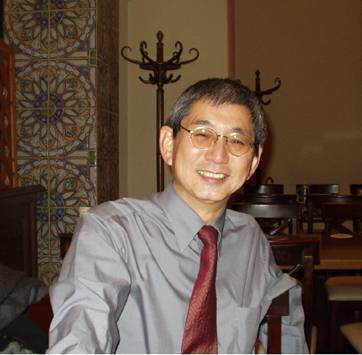 Research
Areas
Research
Areas@
 Research
Areas
Research
AreasOptical and electrical characterization of semiconducting materials and devices
| Piezoelectric Photothermal Spectroscopy | @ |
| (Surface/Interface) Photovoltaic effect | |
| Photoluminescence | @ |
| Raman scattering spectra (Microscopic) | @ |
| Optical absorption and reflectance | @ |
| Electrical transport measurements | @ |
| X-ray Duffraction | @ |
@
Our newly developed
Piezoelectric Photothermal Spectroscopy (PPTS)Advantages of our PPTS methodology
Electron transitions through defect levels usually involve a non-radiative recombination process due to a strong electron-lattice interaction. The PPTS methodology is only and unique experimental technique to clarify directly such non-radiative transition. This enables us to understand the defect dynamics in semiconductors. Since the PPTS technique gives an absolute value for the optical absorption spectrum, sensitivity becomes extremely high for investigating very low concentration of impurity and defect levels. Usual transmission technique gives only a relative value for the absorption spectra. Detailed discussion for the optical absorption will be done for thin films and quantum structures. Since the PPTS methodology can eliminate an effect of light diffusive scattering, say, at the interface of the grain boundaries, accurate absorption spectrum are well investigated for the polycrystalline materials. @Problems of our PPTS methodology
(1) |
Theoretical prediction for the signal generation mechnaism is not easy . Complex differentail equations should be solved. |
(2) |
Other photovoltaic effect such as surface photovoltage should be considered for the carrier diffusion and drift phenomena. |
Recent Works
Characterization
of the semiconducting properties by using
Piezoelectric Photothermal Spectroscopy (PPTS) and/or
Photovoltaic effect at the interface/surface
|
Proton
irradiated solar cell material CuInSe2
|
|
|
Defect
levels in Transparent conductive Oxide ZnO
|
|
|
Quantum
Well structure of GaInNAs Thin Films
|
|
|
High
rate deposition of microcrystalline Si solar cells
|
|
|
InxGa1-xN Grown by Radio-Frequency Molecular Beam Epitaxy
|
@
 tram/Strasbourg
tram/Strasbourg
Back tp Top
@
@
@
@
@
@
@
@
@
@